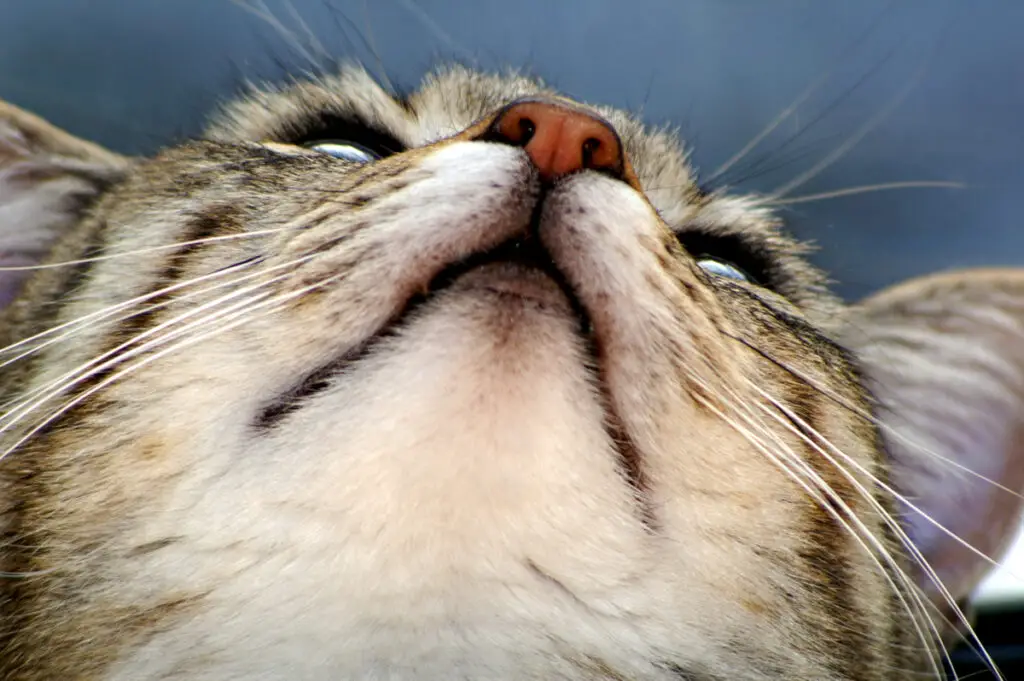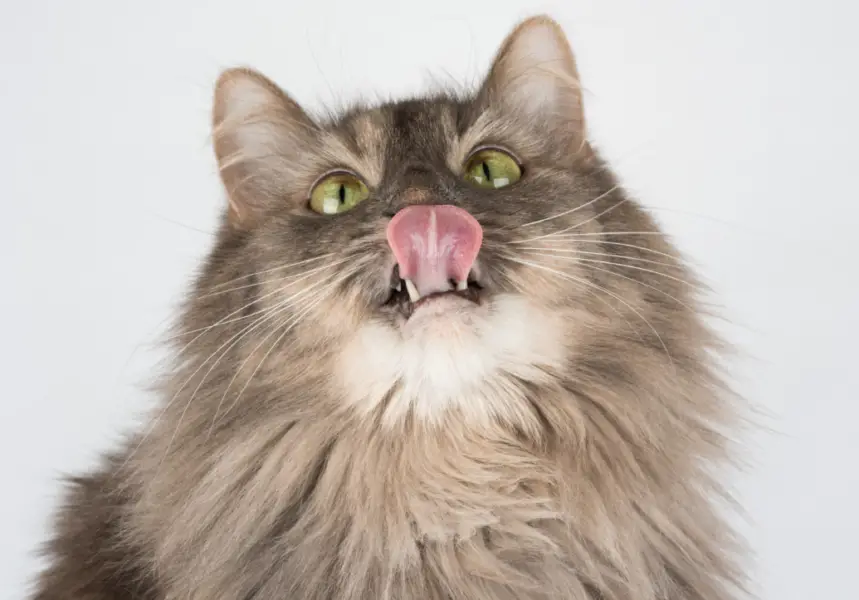The thought of your cat having acne might seem kind of strange at first, but it can become a serious problem if not properly managed. What exactly is feline acne, anyway? Unfortunately, that’s a bit of a difficult question to answer as the exact cause can be somewhat ambiguous. Simply put, feline acne is a skin condition that can affect any breed and gender of cat at any age.
What does feline acne look like?
If your cat has very dark fur, it may not be easy to spot feline acne. It typically occurs on a cat’s chin, and may only look like a patch of dirt at first glance or black spots on the chin. Upon closer inspection, you will likely find a cluster of little black specks (commonly referred to as blackheads) “floating” in the fur. Depending on the severity of your kitty’s acne, you may also find white-headed pustules, irritated and inflamed skin, and blood. If you notice your cat scratching their chin more than normal, be sure to take a close look and see if there’s more to the story.
What causes feline acne?
The development of feline acne is not unlike that of human acne; the hair follicles on the chin become clogged with excess oil (or sebum). Experts have yet to pinpoint one known cause of excess oil and clogging. In an article for The Spruce, Dr. Janet Tobiassen Crosby, DVM, lists the following as possible causes: “Stress, poor grooming, bacterial overload, abnormal sebum production, contact sensitivity/dermatitis, suppressed immune system and concurrent infection or disease.” Many cat owners and veterinarians warn that plastic food and water bowls may be a common culprit of feline acne as they can harbor bacteria. Switching to stainless steel bowls, like Dr. Catsby’s, and washing them daily and providing fresh water can be a huge help in preventing acne in your cat.

Cat from beneath
How do you treat feline acne?
Your cat might only get acne once, or they might have occasional flare-ups. If your cat’s chin acne presents itself as blackheads floating in the fur and you see no pustules, blood or other signs of irritation, you can pretty easily manage it with a sterile flea comb. Gently comb through the chin fur. You should see that the blackhead clusters are coming out in the comb. If there is still some left in the fur, don’t over-comb in an attempt to get it out. You may need to keep at it once a day for a few days before you see a clean chin. After combing, gently dab the chin with warm water and pet-friendly soap. You may also want to ask your vet to recommend a cleanser. If your cat’s acne is more severe and you see pustules, blood, loss of fur or other signs of irritation, it’s probably time to see the vet. They will be able to prescribe an antibiotic or other treatment that you can’t get at home.
Feline acne can be stubborn, but with proper care it can be managed. The most important thing is for your cat to be comfortable, so if you notice them acting irritated by their chin, make sure to take a look. If nothing else, you can think of feline acne as the one thing that levels the playing field for humans and cats. Because let’s face it, they’re superior to us on every other front, but that’s why we love them.
This blog contains affiliate links. For more information about third-party advertising on this site, please click here.
